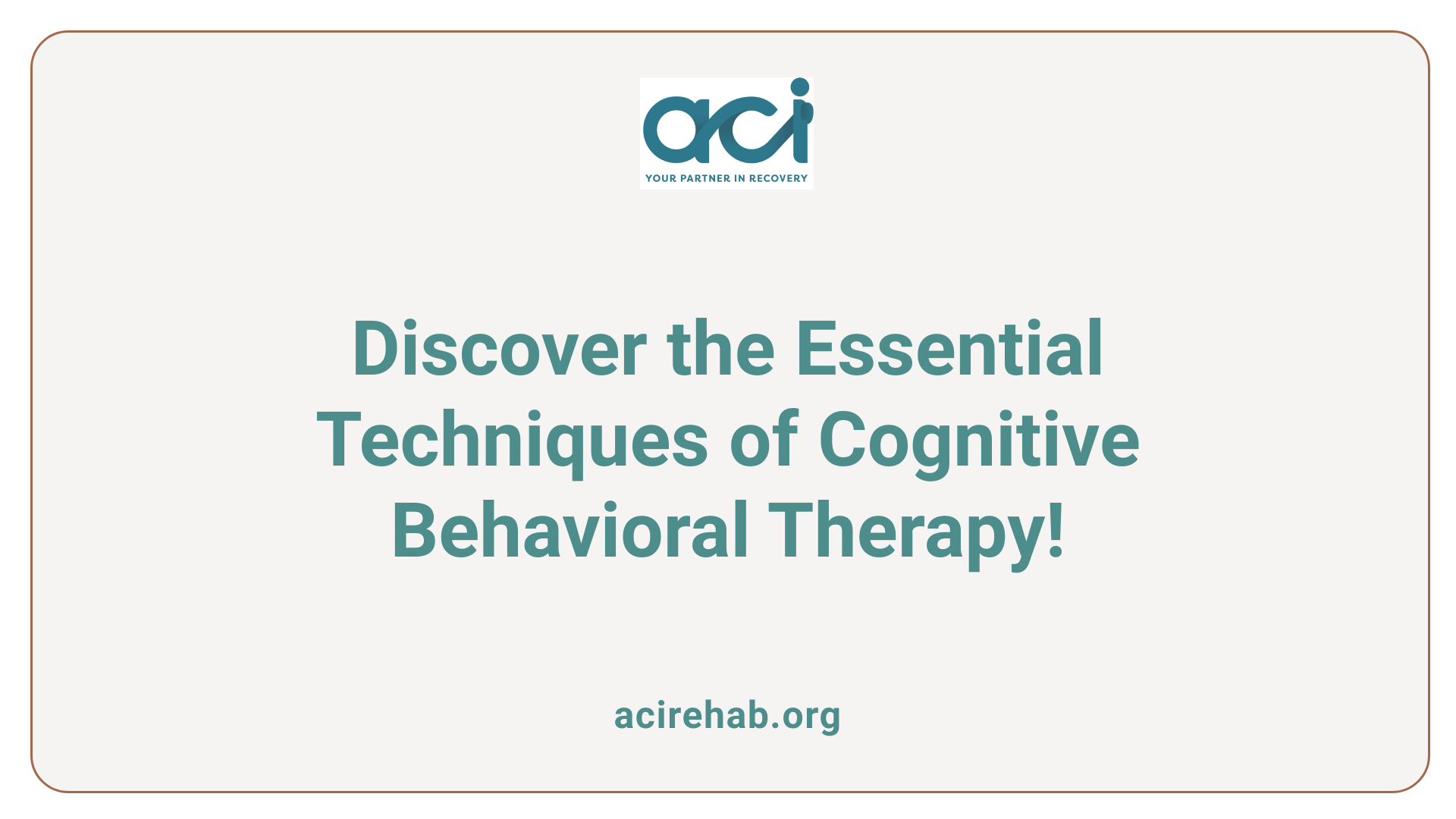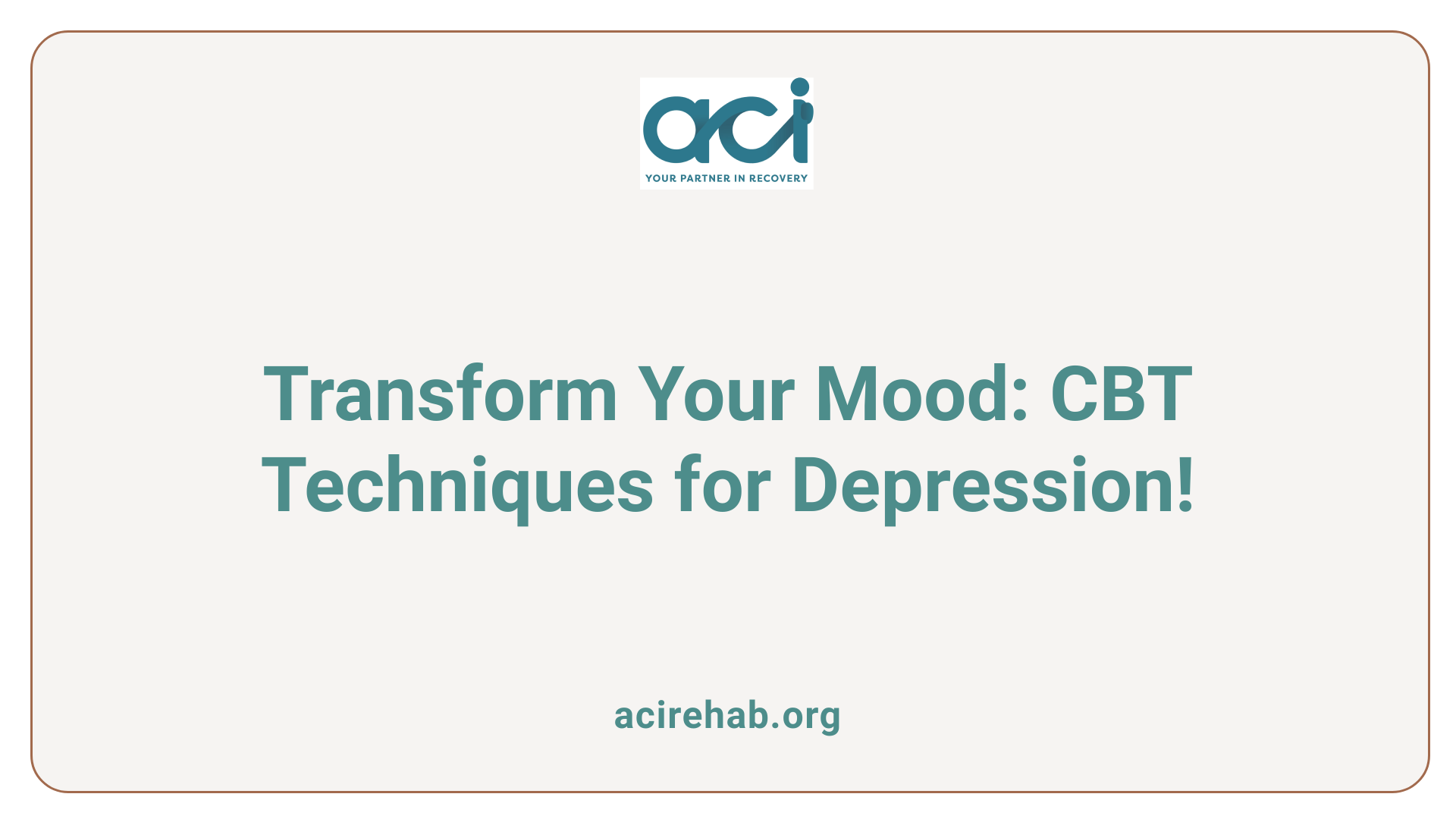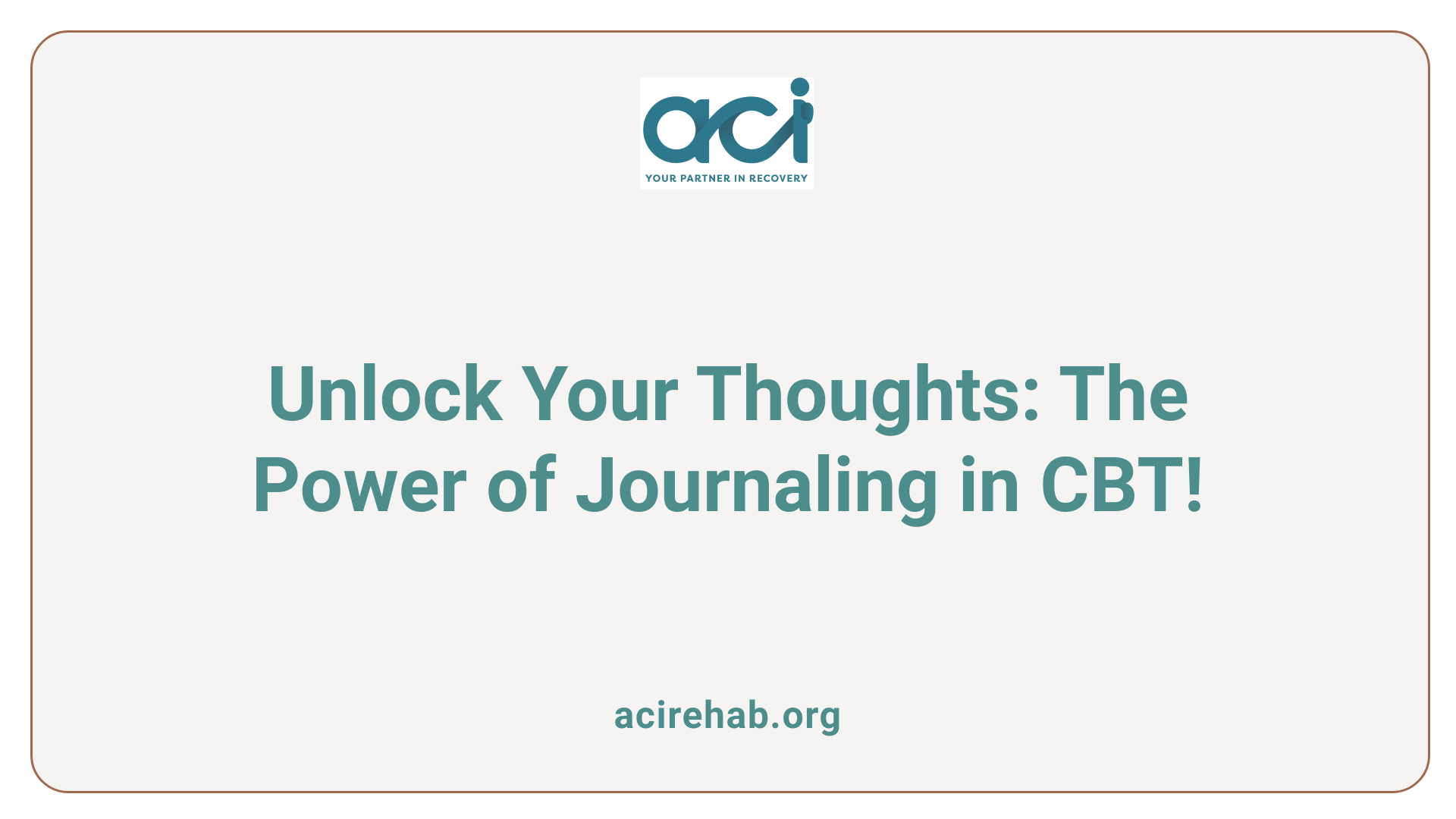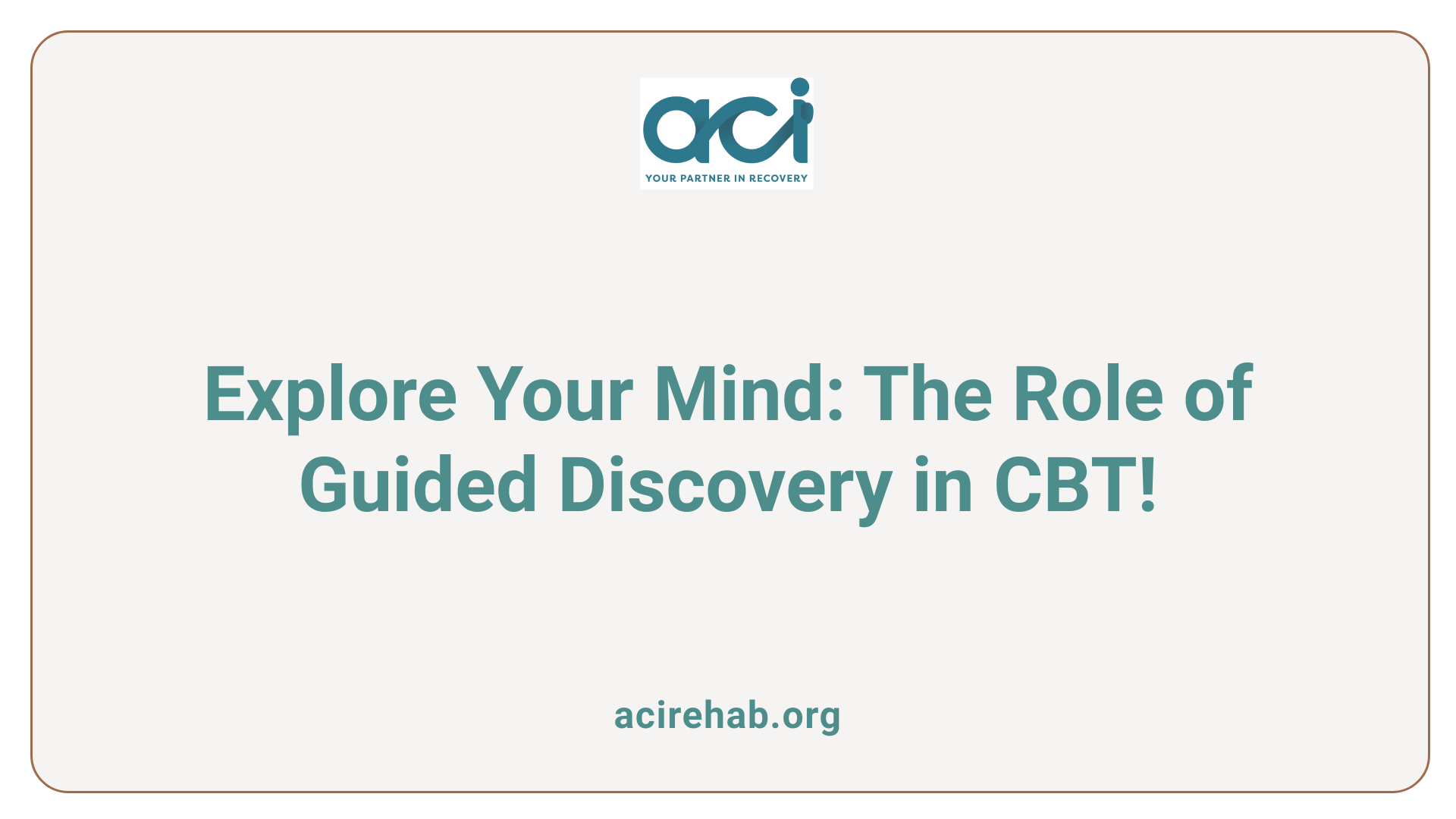Exploring the Mechanics of CBT
Cognitive Behavioral Therapy (CBT) is a structured, short-term, goal-oriented psychotherapy that emphasizes the interplay between thoughts, feelings, and behaviors. Used effectively to treat a wide range of mental health conditions like depression and anxiety, CBT employs various techniques to foster healthier thought patterns and behaviors. This article delves into some of the most common CBT techniques, exploring how they work, their applications, and their benefits.
An Overview of Common CBT Techniques

What are some commonly used Cognitive Behavioral Therapy (CBT) techniques?
Cognitive Behavioral Therapy (CBT) utilizes a variety of techniques aimed at modifying negative thought and behavior patterns. Here are some of the most commonly used CBT techniques:
- Cognitive Restructuring: Also known as reframing, this technique focuses on identifying and challenging irrational thoughts, replacing them with more realistic and constructive beliefs.
- Journaling: Clients are encouraged to keep a journal, which helps them track thoughts and emotions, revealing patterns and aiding in self-discovery.
- Relaxation Techniques: Methods such as deep breathing exercises and progressive muscle relaxation are used to help reduce anxiety and foster a calming effect.
- Exposure Therapy: This involves gradually facing fears in a controlled setting, helping clients to diminish anxiety related to specific triggers.
- Behavioral Activation: Clients schedule enjoyable activities to counteract feelings of depression, enhancing mood through increased engagement.
- Guided Discovery: In this approach, therapists ask open-ended questions to help clients discover insights and challenge their beliefs.
- Socratic Questioning: A critical questioning method that aids clients in analyzing their thoughts, leading to more adaptive thinking patterns.
- Role-Playing: This technique allows clients to practice social skills or rehearse responses to challenging situations, building confidence.
- Mindfulness Techniques: Techniques that cultivate present-moment awareness are incorporated to alleviate emotional distress and improve regulation.
Functions of different techniques
The functions of these techniques largely revolve around enabling individuals to make connections between their thoughts, emotions, and behaviors. Each method serves specific purposes:
- Cognitive Restructuring reorients unhelpful perspectives, fostering a healthier mindset.
- Journaling enhances self-reflection and monitors progress in therapy.
- Relaxation Techniques mitigate physiological symptoms of stress.
- Exposure Therapy systematically reduces avoidance behavior by confronting fears.
- Behavioral Activation boosts mood by increasing engagement in pleasurable activities.
- Socratic Questioning promotes critical thinking and self-awareness.
- Role-Playing enhances social understanding and preparedness for real-life interactions.
- Mindfulness Techniques improve emotional regulation and presence.
Utilizing these diverse techniques, CBT effectively addresses a range of mental health issues, empowering clients to improve their well-being.
Core Components and Theoretical Foundations of CBT
What are the core components of CBT?
Cognitive Behavioral Therapy (CBT) is built on the essential principle that our thoughts, feelings, and behaviors interconnect and influence each other. CBT emphasizes the identification and alteration of negative thought patterns to improve emotional regulation and behavior. Here are the core components of CBT:
-
Psychoeducation:
- Educating clients about their mental health issues enhances understanding and empowers them to engage actively in their treatment.
-
Cognitive Restructuring:
- This involves identifying distorted thinking, challenging negative beliefs, and replacing them with more rational perspectives, promoting positive changes in emotions and actions.
-
Coping Skills Training:
- Clients learn practical strategies to manage stress, anxiety, and difficult emotions, making them more resilient in daily life.
-
Relaxation Training:
- Techniques such as deep breathing and progressive muscle relaxation help reduce physiological symptoms of stress and anxiety.
-
Exposure Techniques:
- Gradual exposure to feared situations allows clients to confront their anxieties in a controlled manner, leading to decreased avoidance behaviors.
-
Self-Monitoring:
- Keeping thought and behavior records assists clients in noticing patterns and understanding the relationships between their experiences and emotional responses.
The Five Areas model illustrates how personal functioning is affected by external situations, integrating an understanding of mental health that addresses both individual thoughts and broader situational contexts. This comprehensive approach is further enhanced by the growing use of self-help resources, including computerized CBT, making therapy more accessible.
By combining these core elements, CBT effectively addresses a wide range of psychological issues, promoting healthier thinking and behavior patterns.
Exploring Different CBT Modalities
What are the different types of Cognitive Behavioral Therapy (CBT)?
Cognitive Behavioral Therapy (CBT) is versatile with several distinct modalities tailored to specific needs:
-
Mindfulness-Based Cognitive Therapy (MBCT)
Focuses on combining cognitive therapy with mindfulness practices to help individuals manage anxiety and depression by fostering present-moment awareness. -
Dialectical Behavior Therapy (DBT)
Originally created for treating borderline personality disorder, DBT integrates cognitive-behavioral techniques with mindfulness strategies, particularly effective for managing intense emotions. -
Acceptance and Commitment Therapy (ACT)
This approach emphasizes accepting painful thoughts and feelings while committing to behavioral changes aligned with one’s values, promoting psychological flexibility. -
Rational Emotive Behavior Therapy (REBT)
REBT targets irrational beliefs, seeking to reframe these thoughts to reduce emotional distress; it promotes rational thinking over self-defeating beliefs.
Unique approaches of each type
Each modality employs unique techniques to facilitate change:
- MBCT blends traditional CBT practices with mindfulness meditation, encouraging clients to become more aware of their thoughts without judgment.
- DBT employs skills training encompassing emotion regulation, distress tolerance, interpersonal effectiveness, and mindfulness.
- ACT prioritizes acceptance and behavioral change, encouraging individuals to embrace their thoughts while taking actions that further their goals.
- REBT focuses on identifying and disputing irrational beliefs, often leading clients to develop a more balanced perspective on their situations.
| CBT Modality | Core Focus | Unique Techniques |
|---|---|---|
| Mindfulness-Based Cognitive Therapy | Meditation and mindfulness | Mindful awareness, present-moment focus |
| Dialectical Behavior Therapy | Intense emotion management | Skills training in regulation and mindfulness |
| Acceptance and Commitment Therapy | Psychological flexibility | Embracing emotions, commitment to values |
| Rational Emotive Behavior Therapy | Challenging irrational beliefs | Disputing self-defeating thoughts |
CBT’s adaptability enables practitioners to select the most effective combination for their clients, offering avenues for addressing a wide range of mental health issues.
CBT for Anxiety Management
How is CBT used for managing anxiety?
Cognitive-behavioral therapy (CBT) plays a significant role in managing anxiety disorders by providing a systematic approach to tackle negative thought patterns.
One of its primary techniques, cognitive restructuring, aids individuals in identifying and challenging negative automatic thoughts (NATs) as well as cognitive distortions such as catastrophizing or overestimating the likelihood of negative events. This method empowers patients to replace harmful thoughts with more realistic and constructive ones.
Another vital tactic is graded exposure, where clients gradually face feared situations. This technique enables individuals to exercise their coping mechanisms and reduce anxiety over time. For example, someone with a fear of public speaking might start by practicing in front of a mirror before gradually speaking before small groups.
Additional strategies like worry containment teach patients to manage intrusive thoughts by allocating specific times for contemplation. This technique makes intrusive worries feel less overwhelming, thus enhancing control over anxiety.
Furthermore, behavioral activation encourages individuals to re-engage in activities they might typically avoid due to anxiety. Committing to enjoyable tasks can help combat depressive symptoms often accompanying anxiety, fostering a sense of accomplishment and well-being.
In summary, CBT offers a structured toolkit that facilitates healthier thought patterns and effective anxiety management strategies, promoting resilience and better emotional regulation.
CBT Techniques in Depression Treatment

How do CBT techniques help treat depression?
CBT techniques play a vital role in the treatment of depression by focusing on identifying and transforming negative thought patterns that fuel depressive symptoms. One of the cornerstone methods in this approach is cognitive restructuring. This technique encourages individuals to challenge and reframe their irrational beliefs about themselves, fostering a more positive self-image.
Engaging in journaling is another effective technique. By tracking their thoughts and feelings, individuals can uncover patterns that contribute to their depression, making it easier to address these negative thoughts. Alongside journaling, activity scheduling promotes participation in enjoyable and meaningful activities, combating the avoidance behaviors often associated with depression.
A key component of CBT is behavioral activation, which aims to reverse the cycle of decline in mood caused by inactivity. This method motivates individuals to take actionable steps aligned with their personal values, helping to restore a sense of purpose and fulfillment.
Overall, CBT equips individuals with practical tools to enhance emotional responses, challenge their cognitive distortions, and manage their depression more effectively. By integrating these techniques, patients are better positioned to break free from the grip of depressive thoughts and behaviors.
| Technique | Description | Purpose |
|---|---|---|
| Cognitive Restructuring | Challenging and reframing negative thoughts | To enhance self-image and reduce negative self-talk |
| Journaling | Tracking thoughts and feelings | To uncover patterns contributing to depression |
| Activity Scheduling | Planning enjoyable activities | To combat avoidance and boost motivation |
| Behavioral Activation | Engaging in meaningful activities | To restore mood and provide a sense of purpose |
By utilizing these and other CBT strategies, individuals struggling with depression can foster healthier thought patterns and manage their emotional well-being more effectively.
The ‘3 C’s’ Technique in CBT
What are the ‘3 C’s’ of CBT and how are they applied?
The ‘3 C’s’ technique in Cognitive Behavioral Therapy (CBT) consists of Catch it, Check it, and Change it. This structured method aids individuals in identifying and modifying negative thought patterns that contribute to emotional distress.
- Catch it – Recognize and acknowledge self-critical or negative thoughts as they arise. This initial step is crucial for fostering self-awareness and interrupting the automatic nature of harmful thinking.
- Check it – Assess the validity of these thoughts. Individuals are encouraged to evaluate their beliefs against objective facts. This process helps debunk irrational ideas and recognizes when thoughts are distorted or unfounded.
- Change it – Replace negative thoughts with balanced and constructive alternatives. This step encourages the adoption of more realistic perspectives, improving emotional responses and coping strategies.
By systematically applying the ‘3 C’s’, clients can address self-stigma—a common hurdle in managing mental health. Utilizing tools like thought records can help track these negative beliefs and reinforce positive changes, leading to enhanced mental well-being. Ultimately, this technique empowers individuals to shift their thought processes, combat stigma, and foster healthier emotional regulation.
The Role of Journaling in CBT

Benefits of Therapeutic Journaling
Therapeutic journaling serves as a cornerstone technique in cognitive-behavioral therapy (CBT). It facilitates self-reflection and encourages individuals to express their emotions, thoughts, and behaviors in a structured manner. By regularly noting their feelings and reactions, individuals can gain insight into their cognitive patterns, identifying recurring themes and triggers. This awareness is crucial for recognizing cognitive distortions that can perpetuate negative emotions.
Journaling also enhances the therapeutic process by fostering a sense of accountability. As clients document their thoughts, they engage more deeply with their cognitive patterns, making it easier to recognize unhelpful thinking that can affect their mental well-being. Not only does this practice support emotional release, but it can also promote problem-solving skills, guiding individuals toward more constructive approaches to their challenges.
Track Thoughts and Emotional Patterns
One of the key objectives of journaling in CBT is to track thoughts and emotional patterns over time. Keeping a thought record allows clients to dissect their emotions and find parallels between specific situations and their reactions. This documented journey can reveal cognitive traps, such as catastrophizing or polarized thinking, that affect their daily experiences.
Additionally, analyzing these patterns helps individuals learn coping mechanisms tailored to their personal struggles, which can alleviate feelings of anxiety and depression. By synthesizing the insights gained from their journals, clients can see their progress throughout therapy, enhancing their motivation to continue their journey toward healthier thinking and behavior.
Understanding Cognitive Restructuring
Significance of Cognitive Restructuring
Cognitive restructuring, a fundamental component of cognitive-behavioral therapy (CBT), is pivotal for transforming negative thought patterns into healthier and more adaptive ones. It plays a crucial role in alleviating emotional distress by helping individuals challenge the accuracy of their beliefs. By addressing cognitive distortions—such as catastrophizing, filtering, and polarized thinking—this technique equips clients with the tools to mitigate anxiety and depressive symptoms.
This method is especially beneficial for individuals struggling with mental health issues. It fosters self-awareness and teaches clients to recognize how their thoughts influence their feelings and behaviors, ultimately promoting healthier coping mechanisms.
Process of Altering Thought Patterns
The process of cognitive restructuring involves several key steps. Initially, individuals are encouraged to identify and document their negative thoughts through techniques such as journaling or thought records. This self-monitoring helps highlight specific cognitive distortions that require attention.
Subsequent steps include evaluating the validity of these thoughts, challenging their accuracy by exploring evidence both for and against them, and replacing them with more balanced or positive alternatives. This structured approach not only enhances emotional regulation but also empowers individuals to engage with their experiences in a constructive manner.
Exposure Therapy: Confronting Fears in CBT

Mechanics of Exposure Therapy
Exposure therapy is a central technique in cognitive-behavioral therapy (CBT) that helps individuals confront their fears in a safe and controlled environment. The approach involves gradually exposing patients to their feared stimuli, whether they be situations, objects, or internal sensations. This can be done through various methods, including:
- Gradual Exposure: Introducing the fear element slowly, starting from the least distressing aspect.
- Imaginal Exposure: Having the individual visualize the feared scenario in detail while employing relaxation techniques to manage anxiety.
- In Vivo Exposure: Involving real-life encounters with the feared objects or situations under the therapist’s supervision.
Measuring progress often involves tracking anxiety levels before, during, and after exposure, helping individuals realize that their fears may be exaggerated or unfounded.
Applications for Anxiety Disorders
Exposure therapy is particularly effective for a range of anxiety disorders, including:
- Specific Phobias: Helping individuals face their fears of specific objects or situations.
- Social Anxiety Disorder: Through role-playing scenarios, patients can practice social skills in a safe environment, building confidence for real interactions.
- Post-Traumatic Stress Disorder (PTSD): Patients confront traumatic memories and related stressors in a controlled manner, aiding in healing.
This systematic confrontation helps individuals reduce their avoidance behaviors over time, leading to significant reductions in anxiety and promoting healthier coping mechanisms.
Integrating Relaxation Techniques in CBT
Deep Breathing and Stress Reduction
Incorporating relaxation techniques such as deep breathing exercises in cognitive-behavioral therapy (CBT) is essential for managing anxiety and enhancing overall emotional well-being. Deep breathing helps activate the body’s relaxation response, reducing physiological symptoms of stress like elevated heart rate and blood pressure. Practicing deep breathing regularly allows clients to gain better control over their anxiety, leading to a clearer mind and improved focus.
Relaxation Methods in Therapy
Various relaxation methods are used within CBT to support individuals in managing their stress responses. These can include:
- Progressive Muscle Relaxation: This technique involves systematically tensing and relaxing different muscle groups, promoting a heightened awareness of physical tension and relaxation.
- Mindfulness Meditation: By fostering present-moment awareness, individuals learn to disengage from negative thought patterns and reduce emotional dysregulation.
- Imagery Techniques: Encouraging visualization of calming environments can induce relaxation and enhance mood.
By addressing both cognitive and physical dimensions of anxiety, these relaxation techniques play a crucial role in the efficacy of CBT.
Activity Scheduling and Behavioral Activation
Engagement in positive activities
Activity Scheduling is a powerful CBT technique that encourages individuals to proactively plan and engage in activities that bring joy and fulfillment. By identifying enjoyable or meaningful tasks, patients can counteract avoidance behaviors often tied to mental health issues like depression and anxiety. This strategic approach not only combats low mood but also enhances overall well-being.
Promoting motivation and action
Behavioral Activation complements Activity Scheduling by fostering a sense of achievement and purpose. When individuals commit to scheduled activities, they leverage motivation and create a routine that helps to break the cycle of inactivity and depression. Over time, these small behavioral changes can significantly improve mood and reinforce positive thinking patterns, offering a pathway towards a more engaged and fulfilling life.
| Technique | Purpose | Outcome |
|---|---|---|
| Activity Scheduling | Plan enjoyable activities | Increases engagement and reduces avoidance |
| Behavioral Activation | Encourage mood-enhancing behaviors | Enhances motivation and sense of purpose |
| Positive Activities Tracking | Monitor participation in planned activities | Provides insight into mood improvement |
Guided Discovery in Therapeutic Practice

Questioning to Broaden Perspectives
Guided discovery in cognitive-behavioral therapy (CBT) is an interactive process where therapists utilize open-ended questions to help individuals reflect on their thoughts and feelings. This technique encourages clients to delve deeper into their thinking patterns and explore alternative viewpoints. By fostering a collaborative environment, therapists can assist clients in examining their automatic thoughts, leading to new insights about their emotional responses and behaviors.
Challenging Underlying Beliefs
Another critical aspect of guided discovery is the challenge it poses to existing beliefs. Therapists gently guide clients in questioning the validity of their deep-seated convictions that may contribute to negative emotions or dysfunctional behaviors. This process of exploration helps individuals recognize cognitive distortions, such as all-or-nothing thinking and catastrophizing. As clients begin to identify and reevaluate these underlying beliefs, they can develop healthier thought patterns, ultimately facilitating positive change in their emotional well-being.
In essence, guided discovery is more than just a question-and-answer session; it is a transformative journey that empowers individuals to take control of their thoughts and make informed choices for better mental health.
Role of Positive CBT in Mental Health
Focus on strengths and solutions
Positive Cognitive Behavioral Therapy (CBT) shifts the focus from merely addressing problems to enhancing strengths and discovering solutions. This approach recognizes that while it’s vital to confront and understand negative thoughts and behaviors, fostering positive attributes can lead to sustainable mental health improvements. It encourages individuals to harness their capabilities, setting achievable goals that capitalize on their personal strengths, which can significantly enhance their motivation and engagement in therapy.
Differences from traditional CBT
Unlike traditional CBT, which primarily emphasizes analyzing problems and cognitive distortions, Positive CBT integrates a more holistic view. Traditional CBT may focus on identifying and correcting unhelpful thinking patterns, whereas Positive CBT actively aims to build upon positive experiences and capacities. By combining both frameworks, individuals not only resolve issues but also cultivate resilience, leading to improved emotional well-being and a more proactive attitude toward life’s challenges.
The Transformative Power of CBT Techniques
Cognitive Behavioral Therapy has transformed the way individuals approach mental health challenges by equipping them with practical tools to modify unhelpful thinking and behavior patterns. The diverse techniques within CBT, ranging from cognitive restructuring to exposure therapy and relaxation training, demonstrate its adaptability and wide-ranging applications. By focusing on current cognitions and behaviors, CBT empowers individuals to achieve better mental health outcomes through collaboration with therapists and application of learned skills to everyday life. As research continues to support its efficacy, the reach and evolution of CBT continue to grow, cementing its role as a cornerstone of therapeutic practice.
References
- CBT Techniques: 25 Cognitive Behavioral Therapy Worksheets
- CBT Techniques: Tools for Cognitive Behavioral Therapy – Healthline
- Cognitive behavioral therapy (CBT) techniques – TheraPlatform
- 11 Cognitive Behavioral Therapy Techniques – Klarity Health
- Brief Introduction to Cognitive Behavioral Therapy for the Advanced …
- Cognitive Behavioral Therapy (CBT): What It Is & Techniques
- Cognitive Behavioral Therapy (CBT): Tasks & Beliefs – Verywell Mind

